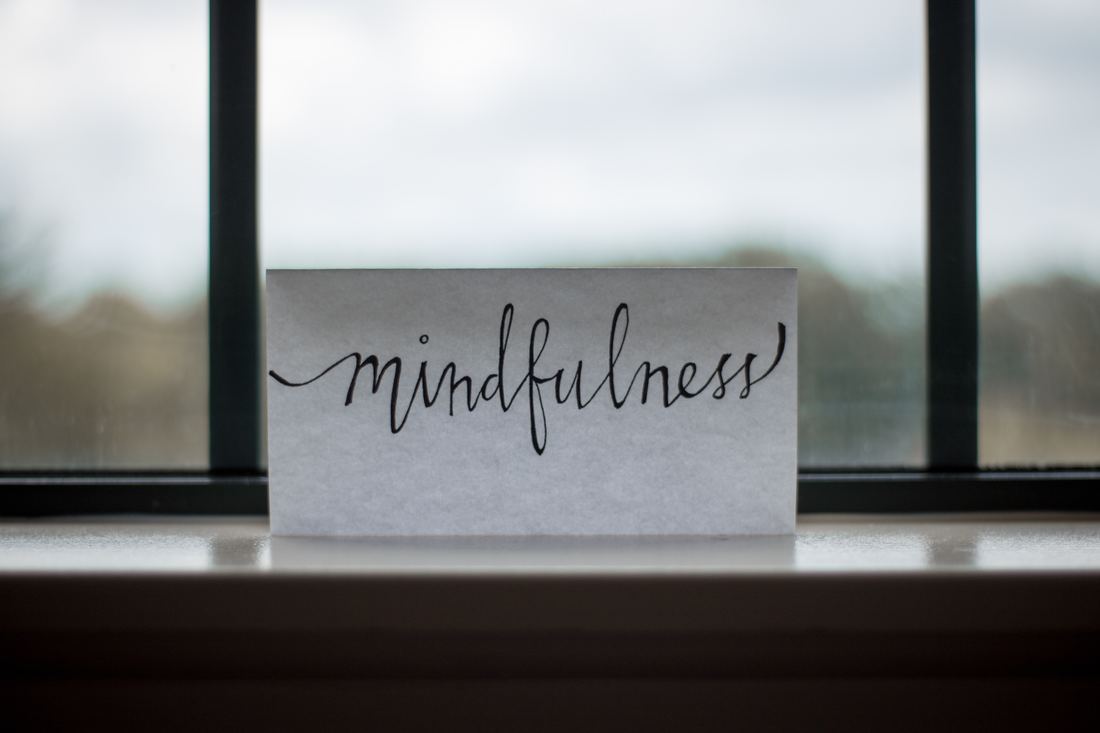|
If you want to excel in your profession or at your craft...
If you want to be a better partner, friend, parent... If you want to be fitter and stronger... If you want to be happier… You must set.... ...GOALS! Right? It’s taken as a given in our culture that goals are THE foundation of performance and wellbeing. I'd say our culture is goal obsessed. BUT is there a counterproductive or even destructive side to goal setting?
0 Comments
Life is like music. A clever video from the creators of South Park featuring Alan Watts on the meaning of life. Makes a good point.
Clarify and connect to your values. Loosen the grip on your goals. Dr. Russ Harris explains why.6/16/2017
Dr. Russ Harris explains why it pays to clarify and connect to our values and loosen the grip on our goals with a simple metaphor.
A central feature of one of my favourite therapies, Acceptance and Commitment Therapy (aka ACT) is the idea that identifying our “values” and moving towards them even when we are experiencing emotional pain is crucial for psychological health and wellbeing.
What are values? They are the things in life that are most important to us. They are what we want our lives to be about. They are different from goals in that they are not things that we can achieve or complete and they are not future destinations. They are the the things that are most important to us in life and in the now. Examples might be: Helping, creativity, connecting with others, self development, kindness, independence. One way to tap into your values is to ask, “Who or what is most important to me?” I will write more on identifying values in an upcoming blog post. So why move towards values even when we feel terrible? 3 simple mindfulness practices for coping with difficult experiences and emotions in day-to-day life10/7/2015 Cultivating mindfulness through regular meditation practice has been shown to produce numerous benefits over time. It reduces stress, anxiety, and emotional reactivity and increases focus, well-being, and compassion.
However, meditators sometimes grapple with the question of how to practically apply mindfulness skills in day-to-day life, particularly in moments of stress when we notice our buttons are being pushed or we’re edging towards emotional reactivity. It’s not always clear how to take mindfulness from the meditation cushion into the activities of daily life. It’s also no surprise that being mindful in moments where we are dealing with a difficult person or event can be more challenging than being mindful when we are peacefully and comfortably seated on a meditation cushion! There are a few short practices that are well suited to integrating mindfulness into day-to-day life in order to reap the more tangible and immediate effects of stepping out of automatic patterns of reactivity and grounding ourselves in the present. Weaving these practices into your day in moments of calm can help you go about your daily activities more mindfully and may help prepare you to use mindfulness skills when you encounter stressors. This may interrupt the cascade of negative thoughts, emotions, and actions that sometimes seems to happen automatically in moments of stress or emotional discomfort. These different practices share elements but also have important differences. Try them and see what works best for you!
One of my favourite talks on what mindfulness is all about for people who don't know much about it yet.
 Mindfulness is a particular state of awareness cultivated through intentional practice. WHAT IS PARTICULAR ABOUT THIS STATE OF AWARENESS? 1. It is focused on the present moment. Our awareness is usually caught up in thoughts about the past or future. We therefore cruise through life on autopilot unaware of what’s really happening now in our bodies and around us. Sometimes this is helpful because it allows us to remember, learn, and plan. The downside is: 1) We miss what’s actually happening now. 2) We get caught in disappointment about the past or worry about the future, which can lead to depression or anxiety. We don’t need to actually experience threatening events to be scared or stressed – we can simply imagine past or future threats. Practicing mindfulness means intentionally bringing awareness to the present over and over again. It’s about noticing what’s here now. Ironically, there is a sense in which all that actually exists is the present. Both the past and the future only exist now as thoughts, concepts, or stories. The present moment is filled with joy and happiness. If you are attentive, you will see it. - Thích Nhất Hạnh 2. It is embodied and sensory. Mindfulness is a type of knowing through awareness with all of the senses (smell, touch, hearing, sight, taste, proprioception, interception, sensory knowing). We are often caught up in experiencing the world almost uniquely through our thoughts/intellect/concepts: Example: this is delicious, this tastes horrible, she’s beautiful, he’s stylish, this room is ugly, he’s talented. However, we don’t spend much time experiencing what actually comes to us through our senses. Example: experiencing the texture of fabric, noticing light hitting a particular object, vibrations hitting our eardrums, the rise and fall of the pitch in a piece of music, the rush of an emotion bubbling up inside our chest. When we practice mindfulness we cultivate knowing though all our senses at a pre-conceptual level. Sometimes I like to ask myself, how would I experience and get to know about this if I were a dog or a small child without concepts such as rude, ugly, stylish, and beautiful? What is here for my senses to experience? Out beyond ideas of wrongdoing and rightdoing, there is a field. I’ll meet you there. - Rumi 3. It is characterized by five key attitudes. a) Non-striving/acceptance: This means noticing subtle forms of resistance such as wishing things were different, resisting certain facts or uncomfortable sensations in your body and intentionally and repeatedly cultivating non-resistance by coming back to noticing, acknowledging, and experiencing how things are in this moment primarily at a sensory level. Example: Becoming aware that you are rushing though a task you don’t like and telling yourself how great it will be to be done. Then, choosing to disengage from your thinking and directing awareness to the sensations in your body when you rush, when you do something you don’t like allowing yourself to open up to these. Then, noticing the information coming through all of your senses in this very moment. b) Non-judgment/beginner’s mind: This means noticing when we’re intellectualizing, judging, conceptualizing, or telling “stories” about something based on our past experience and instead choosing to bringing our awareness back to the present and with curiosity exploring what we are experiencing as if we are experiencing it for the first time. Example: Noticing you are telling yourself a story about (i.e. thinking about) what it will be like to do something you have experienced before (e.g. meeting a certain person, eating your favourite meal, experiencing a particular emotion) and choosing to come back to explore that this with curiosity, using your senses in this very moment. c) Letting go: This means noticing when your mind is getting carried away with stories or thoughts about how things are, were, or should be. Letting go means intentionally coming back to the present and your body even when these stories are very compelling (they usually are). d) Non-doing/being: This goes hand-in-hand with acceptance. We are almost always trying to do, change, or achieve something. Mindfulness is about intentionally being with what is here now. Simply being. e) Patience/kindness/compassion: When your mind is carried away with stories, thoughts, or judgments acknowledging that this is simply what all minds do. Gently, kindly, and compassionately bringing your mind back to the present over and over and over again. Mindfulness does not imply constant, fixed awareness of the present. It is the intentional and gentle act of bringing your awareness back.  When was the last time you had a eureka! or an aha! moment? When after struggling to find a solution to a difficult problem the answer dawned on you in a moment of clarity like a light switching on in your head? Perhaps you were trying to figure out how to resolve a sticky interpersonal dilemma or solve a challenging problem at work. Maybe you were trying to find the solution to 32-across in the Sunday New York Times crossword. Psychologists refer to these sorts of problems that lack a clear solution and require a shift in perspective to be solved as insight problems. If you ever wished you could be more insightful and creative in solving problems, recent research suggests that maybe you can be. In psychology research people’s insight problem-solving abilities are usually assessed by asking them to find solutions to problems such as this: A prisoner was attempting to escape from a tower. He found a rope in his cell that was half as long enough to permit him to reach the ground safely. He divided the rope in half, tied the two parts together, and escaped. How could he have done this? Solving this and other insight problems requires more than just linear and logical thought and standard intelligence. It also requires the ability to reconsider how the problem is framed i.e. to “think outside the box” and consider multiple possible approaches to finding a solution. Once the problem is framed correctly, the solution pops out suddenly, creating the eureka or aha effect: the feeling the answer was right under one’s nose all along. So how might we become more creative and insightful when faced with life’s puzzles? Two recently published studies in the journal Consciousness and Cognition show that mindfulness may help. The first study showed that people with higher baseline levels of mindfulness (i.e. people who scored higher on a mindfulness questionnaire) had better scores on tests of insight problem-solving ability. This effect was not due to improved mood or the ability to solve other sorts (non-insight) of problems better. The second study provided evidence for a possible causal association between mindfulness and insight problem-solving ability and suggests that insight problem-solving abilities can be developed. This study showed that after a brief 10-minute mindfulness training session in which participants to bring non-judgmental awareness to bodily sensations, people’s performance on insight problems improved. They were able to solve more problems like the prisoner’s escape problem but not more non-insight problems. So why might mindfulness help people solve insight problems? There are several possible reasons. One may be that when we practice mindfulness we practice beginner’s mind: seeing things with bare attention as if for the first time. When we are not mindful we may be constrained (or imprisoned!) by habitual ways of perceiving events in the world around us based on past experience. Usually when we divide a rope in half we cut it into two even pieces. Unless someone points out that an alternative is possible it’s easy become mentally trapped in the perspective that this is the only way to divide a rope! However, this habitual response will not free the prisoner. Solving an insight problem requires seeing things in a new way to generate a non-habitual response. If we were to see the rope with a beginner’s mind we might come to the realization that there is more than one way to divide a rope. Mindfulness may help us solve insight problems because it may allow us to “forget at the right time” and let go of our habitual ideas about how things are and how things can be done. Through practicing mindful awareness of the present moment we may allow become aware of a wider range of possibilities and enhance our creativity and insight problem-solving abilities. For example we may become aware of the possibility of unraveling the rope lengthwise and tying the remaining strands together. Similarly, bringing beginner’s mind to an interpersonal dilemma or a problem at work and practicing non-judgmental awareness of our thoughts and feelings about the situation may improve our perception and discernment of problem components and allow us to flexibly and creatively experiment with new ways of perceiving the situation (i.e. reframing). In this way regular mindfulness practice may not only improve our ability to solve tricky riddles but also to solve real-life insight problems. Ostafin, B.D. & Kassman, K.T. (2012). Stepping out of history: Mindfulness improves insight problem solving. Conciousness and Cognition, 21 (2), 1031- 1036. |
Natsumi SawadaI'm a psychologist and mindfulness teacher based in Edmonton, Alberta. Archives
November 2018
Categories |

 RSS Feed
RSS Feed